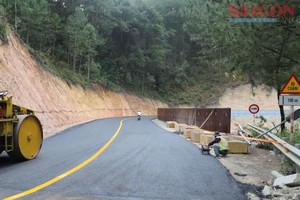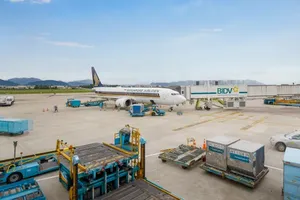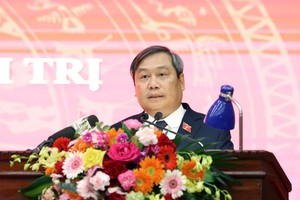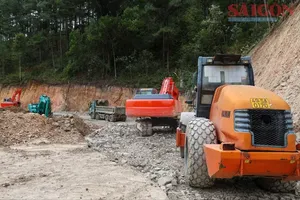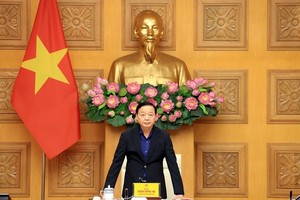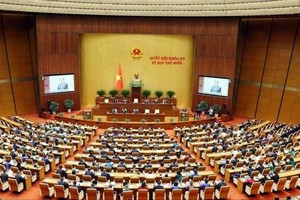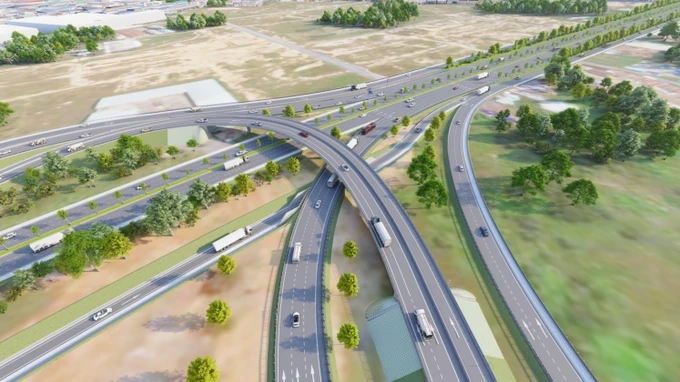
These developments are poised to significantly accelerate socio-economic growth for both the region and the nation in the coming decades. Localities are capitalizing on this momentum by fast-tracking projects and proactively investing in transport links to Long Thanh International Airport.
Investors in the Ho Tram area in Xuyen Moc District of Ba Ria - Vung Tau Province—home to numerous upscale resorts and entertainment venues—have recently welcomed promising news: the Government has approved, in principle, the construction of an expressway linking Long Thanh International Airport to Ho Tram.
Spanning 41 kilometers and requiring an estimated investment of over VND17 trillion (US$654.22 million), the project is expected to inject new vitality into the province’s smokeless industry. Despite Ho Tram’s appeal, with its luxury resorts, casinos, and golf courses catering to high-end tourism, the absence of a nearby airport has long limited its full potential. The route shows that Long Thanh airport is starting to show its role as a new development axis of the region.
According to Deputy Prime Minister Tran Hong Ha, the research and implementation of the traffic improvement project also creates strong economic links between provinces and cities in the region, forming axes for industrial, service, tourism and seaport development.
According to transportation specialists, this is also an excellent "alternative" strategy for the Bien Hoa - Vung Tau Expressway because numerous recent examples have demonstrated severe traffic bottlenecks on newly operational roadways, particularly for Ba Ria - Vung Tau Province, where the substantial Cai Mep - Thi Vai deep-water port generates an immense volume of container truck traffic.
Along with the development of new traffic routes, Ba Ria - Vung Tau province is also urging to speed up the progress of important traffic projects such as the Phuoc An bridge project worth over VND4,800 billion, the expansion of the Vung Tau - Binh Thuan coastal route costing nearly VND7,000 billion, the connecting road to Bien Hoa - Vung Tau Expressway with a cost of nearly VND12,000 billion and a number of connecting routes between seaports and oil and gas industrial parks.
At the Ben Luc - Long Thanh Expressway project site, which spans nearly 30 kilometers and has been operational for over three months since the Lunar New Year, workers are actively engaged in the installation of lighting systems, traffic signs, and road markings.
The junction of the Ben Luc - Long Thanh Expressway project with the National Highway 51 is nearing completion. The asphalt has been laid at the intersections of the expressway and the access road to Phuoc An Port, located in Nhon Trach District. The investor is currently deploying personnel, machinery, and vehicles to carry out the site clearance of the 0.3km segment that links the Ben Luc - Long Thanh Expressway with the Bien Hoa - Vung Tau Expressway, aiming for handover by April 2025.
Nearby, with the Phuoc Khanh Bridge project across Long Tau River connecting HCMC's Can Gio outlying district and Nhon Trach District of Dong Nai Province, responsible agencies are looking for a contractor to construct package J3-1 to carry out the remaining work of Phuoc Khanh cable-stayed bridge with an estimated cost of more than VND636 billion. Construction is expected to be completed in September 2026.
Chairman Vo Tan Duc of Dong Nai Provincial People's Committee said that after the Ben Luc - Long Thanh Expressway project connecting the Southwestern and Southeastern provinces of the Southern Key Economic Zone, is put into use, it will help connect the National Highway 51, the Ho Chi Minh City - Long Thanh - Dau Giay Expressway and Bien Hoa - Vung Tau Expressway to Long Thanh Airport, Cai Mep - Thi Vai Port of Ba Ria - Vung Tau Province. The expressway project also contributes to synchronous connection of the transport system for the socio-economic development of Dong Nai Province.
The Ho Chi Minh City Ring Road 3 project which is expected to be completed by mid-2026, is noteworthy. This route will reduce travel time between Ho Chi Minh City and Binh Duong, Dong Nai, Long An, as well as the southwestern provinces and the northern region, fostering economic growth and increasing investment collaboration among the southeastern provinces.

